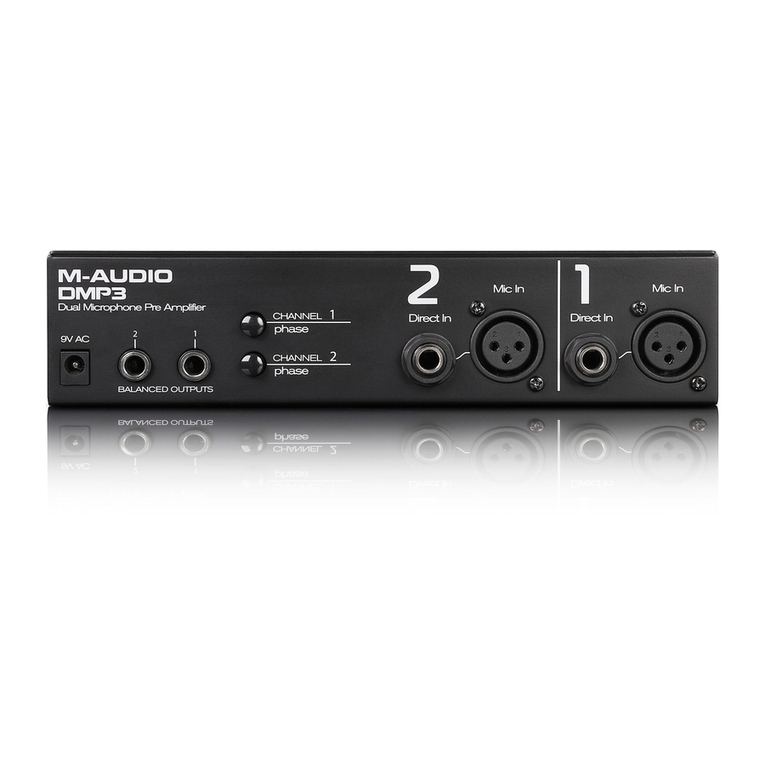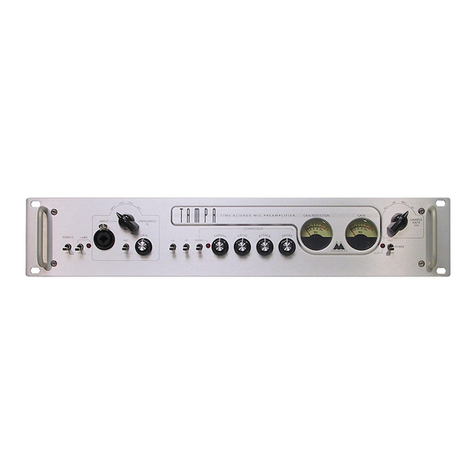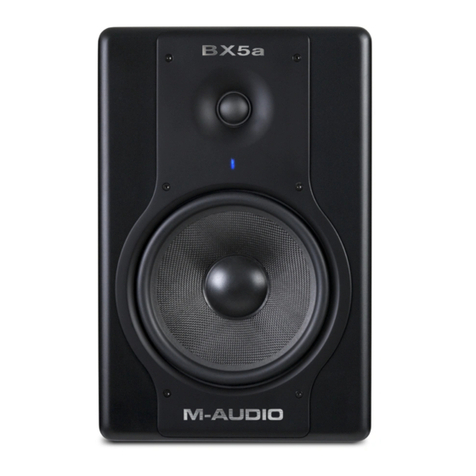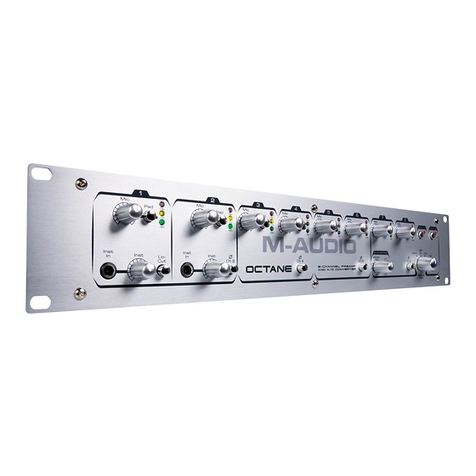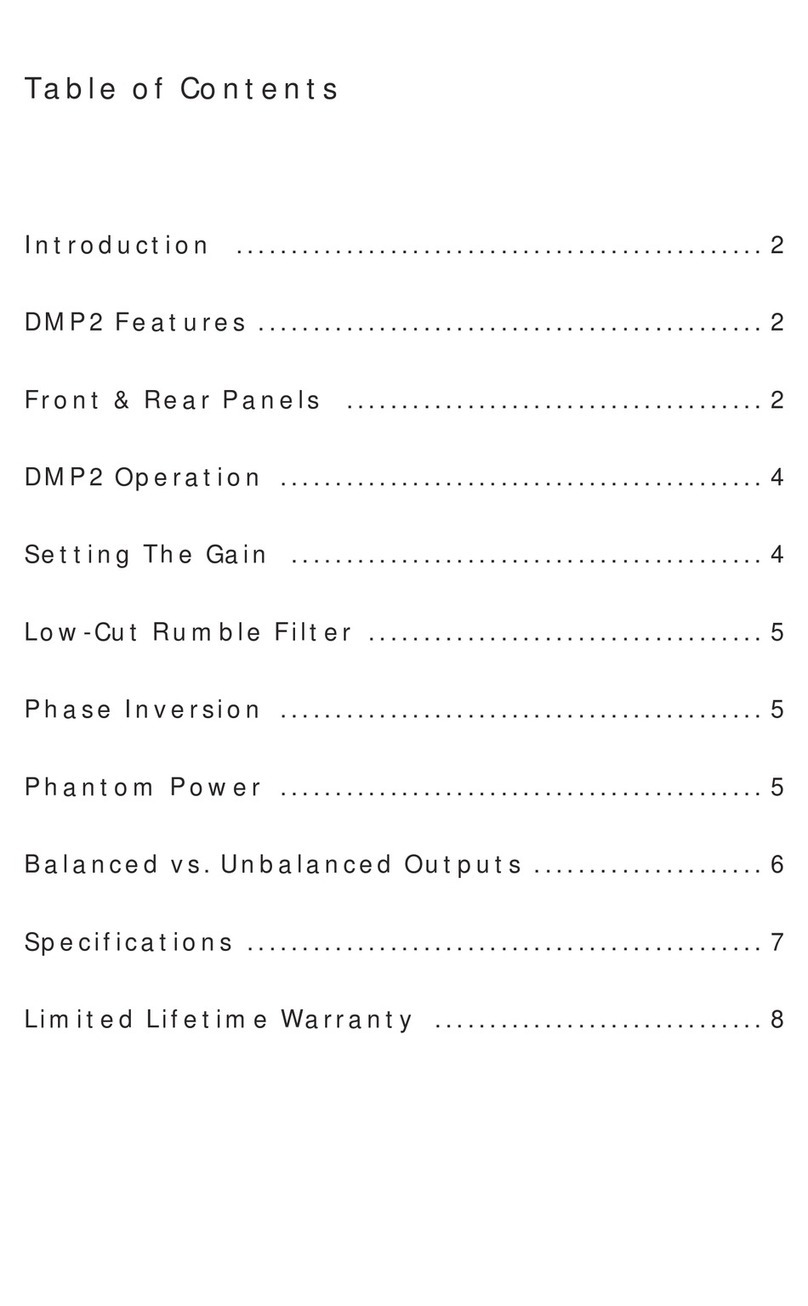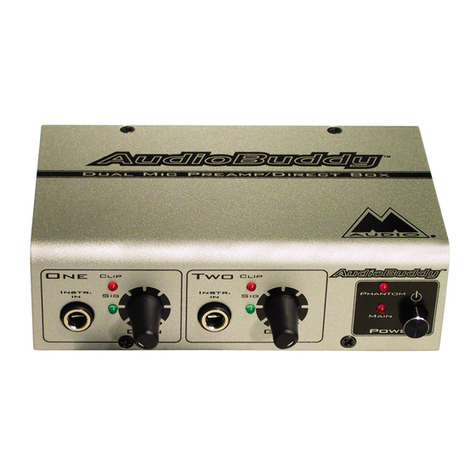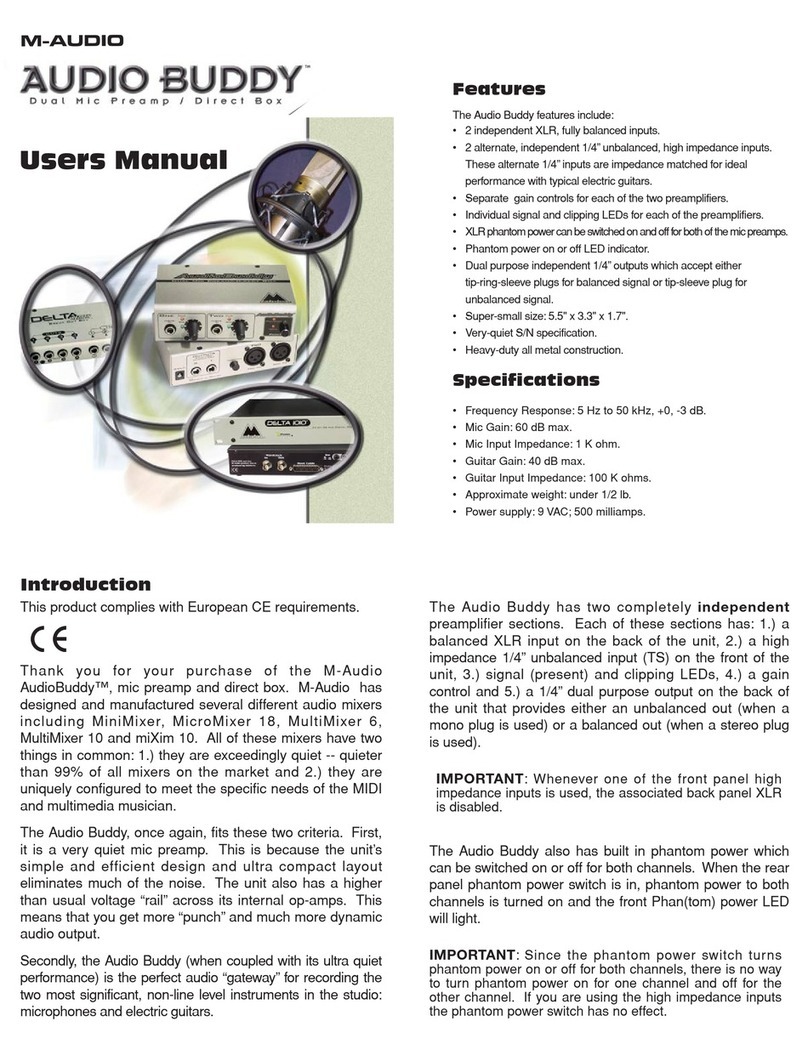M-AUDIO TAMPA - QUICKSTART GUIDE
Getting the Most from Your TAMPA
Thank you for purchasing TAMPA. TAMPA’s design and sound are unlike any other
preamp/compressor you’ve used. Please take a moment to read the following manual
supplement in order to get the most from your new studio tool.
TAMPA Design Goals
One of the “Holy Grails” of audio electronics is the ability to simulate the harmonically
rich “warm” or “natural” sound of tubes with more affordable solid-state electronics.
Most attempts to emulate or model the tube sound fail to take into consideration all of
the qualities that give tubes their characteristic sound. In designing TAMPA, we
conducted extensive research into why people perceive tubes as being so pleasing to
the ear. We also took into consideration that fact that the sonic coloration inherent in
tubes is not always desirable. The result is a design that focuses on natural sound
rather than strict tube emulation. TAMPA can deliver results that range from
transparency to warm coloration similar to that associated with tubes—providing for
more flexibility than you’ll find in other preamps.
Working with TAMPA is a unique experience. At modest gain settings, TAMPA is
extremely transparent. That means that you really hear the true nature and quality of
what you connect to its input. (Many people have never really heard what their mics
and instruments truly sound like because the devices are always colored by the
preamp and other circuitry.) And, as you’ll see, you can easily add more “warmth” to
the sound using higher gain settings. Here, too, the natural-sounding coloration TAMPA
adds to the signal has a unique sonic quality. So don’t be surprised if your mics and
other gear sound different through TAMPA.
About Temporal Harmonic Alignment
In nature, all sounds are comprised of a fundamental frequency along with a series of
harmonics. The frequencies of those harmonics and how their amplitudes change over
time give the sound source its unique sonic signature. In natural sound sources such
as strings, drumheads and vocals chords, harmonics share a characteristic temporal
relationship to the fundamental.
Virtually all electronic circuits generate additional harmonics not present in the source
signal. In that way, every electronic device changes the sonic signature of the signal
passing through it. That change can be quantified according to two different properties:
the amplitude of the additional harmonics and their temporal relationship to the
fundamental.
The amplitude of the induced harmonics is typically measured in THD or total harmonic
distortion. In general, today’s solid-state electronics exhibit very low THD. The sound of
solid state is often described as “muddy” in lower frequencies and “harsh” in higher
frequencies, however, because the harmonics generated rarely exhibit the temporal
Let’s look at a simple scenario where TAMPA’s output is connected to an analog mixer.
(This discussion also applies to recorders and sound cards that have input gain controls
in either hardware or software.) If you want a “warm” sound, you’ll want to drive
TAMPA’s internal signal level fairly high. That means that you’re looking for hot signal
levels approaching or even surpassing 0VU on the OUTPUT LEVEL METER. You can
accomplish this by turning TAMPA’s GAIN up and optionally engaging the +20dB switch
on the input stage. (The CLIP indicator light comes on at +26dBu, approximately 4dB
below the actual digital clipping level of 30.5dB. Basically, you can drive the OUTPUT
LEVEL METER as hot as you want as long as you don’t hear anything offensive.) If the
signal level overloads your mixer input, engaging the 20dB PAD at TAMPA’s output will
likely bring it back down to a useable range. You’ll find that there’s an interactive
process in setting TAMPA’s GAIN and your mixer’s input attenuation.
If, on the other hand, you want a more neutral or transparent sound from TAMPA,
reduce the gain by about 10 to 20 dB. Be careful to maintain enough gain that you still
have an acceptable signal level at the mixer. You’ll probably want to keep the +20dB
switch in the preamp stage off unless you’re not getting much of a reading at all on the
OUTPUT LEVEL METER. Similarly, you’ll likely want to keep the 20dB PAD disengaged on
the output stage so that your mixer receives a strong enough signal. Here, too, adjust
TAMPA’s GAIN control and your mixer’s input gain to achieve the desired balance of
tonality and signal level.
Compression adds another variable, as it has the effect of reducing gain. In general, the
solution lies in continuing to interactively adjust TAMPA’s GAIN and your mixer’s input
attenuation in order to achieve the right combination of signal level and tone. When using
high compression settings, you may also need to disengage the 20dB PAD in order to get
more gain. (The compressor is capable of a total gain reduction of about 20dB.)
Since the 20dB PAD only affects TAMPA’s analog outs, it does not enter the equation if
you are running the preamp’s digital outputs directly into a digital recording device. Your
digital recording device might have gain controls that you can use interactively with
those of TAMPA. You can also add 6dB of gain to the digital signal by summing the
identical left and right signals coming from TAMPA’s digital outputs.
Conclusion
Treating TAMPA as the unique piece of gear that it is and familiarizing yourself with the
characteristics of its gain structure will result in many rewarding sessions. For more
information on setting TAMPA’s signal levels, please read your entire TAMPA manual.
